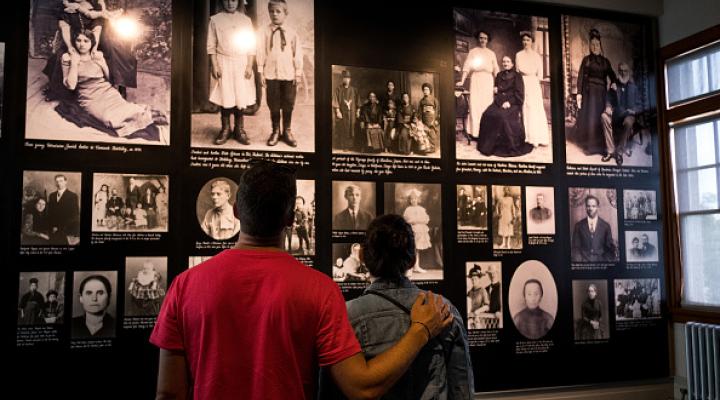Immigrants Then and Now

However, most immigrants arriving at Ellis Island were processed within hours and, in fact, no passports, visas, or papers were needed to enter the United States. In the rare case that an immigrant was not processed due to health or questionable information, they were detained.
“Detention meant you could be held overnight, and you would sleep in dormitory rooms and you would be fed three meals a day in the immigrants’ dining room,” according to Barry Moreno, historian and librarian at the Ellis Island Immigration Museum. Only 2 percent of immigrants at Ellis Island were denied entry to the United States.
In terms of the advantageousness of modern-day immigrants, new data- actually old data that has finally been digitized and reviewed- also shows this is untrue.
The First Immigrants Compared to Today's
“In reality, today’s immigrants- and their children- are building the American Dream with every bit as much speed, ingenuity and success as the huddled masses of centuries past,” writes Andrew Van Dam of The Washington Post.
The research that shows this immigrant success comes from Stanford University economist Ran Abramitzky and Leah Boustan of Princeton University. Professors Abramitzky and Boustan took 14 years to follow Americans across generations using old decennial census files released by the government.
Through the use of online tools like Ancestry.com, volunteers that digitized print records, and hours of analyzing the data, the findings proved that Ellis Island immigrants and today’s air, sea or land immigrants succeed at the same rates.
“While Ellis Island immigrants were better off upon arrival than today’s immigrants, thanks largely to the prosperity of their source countries, the economic progress they made during their lifetimes was strikingly similar,”
Thanks to tracing census and genealogy records across generation, Abramitzky and Boustan got a full perspective of early immigrant life. The first wave of arrivals struggled finding work, learning the language, and having stability. However, the second generation assimilated better, rose up the economic ladder, and had more financial stability. Progressively, each generation had a better life.
“Children of immigrants from Mexico and the Dominican Republic today are just as likely to move up from their parents’ circumstances as were children of poor Swedes and Finns a hundred years ago,” the researchers wrote.
Immigrants Make the U.S. Better
This research is valuable since it shows the importance of immigrants assimilating and giving back to this country. At OPA we believe in the potential that immigrants have and support their path to becoming full members of American society. Because of that we created our 1% interest loan to pay for USCIS at the moment of citizenship application. It is a hand-up, not a hand-out, that builds trust and accountability amongst community.



